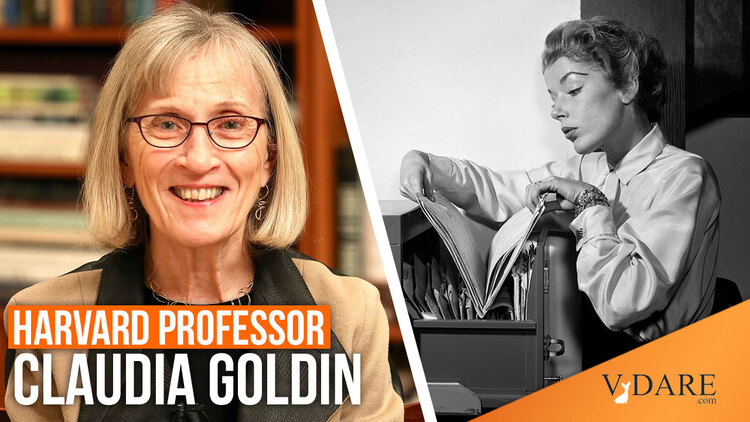Earlier: Quote Of The Day: ”I Had Rarely Met A Housewife Who Did Not Have A Touch Of Slaveholder In Her”
Claudia Goldin is a Harvard professor of economics who specializes in 20th Century U.S. economic history: e.g., how much good did the expansion of the percentage of students going to high school do in the 20s and 30s? Probably a lot.
American WWII soldiers were reasonably trainable to maintain a massively mechanically complex war machine. Other countries didn’t have the depth of workers ready to step right in at sophisticated duties. When the Japanese lost all four aircraft carriers at the Battle of Midway in 1942, they not only lost the ships, the planes, the pilots, but they also lost a notable percentage of their economy’s most advanced technicians, and they never seemed able to gear up for the rest of the war to train enough farm boys to replace their aviation technician losses. In contrast, the U.S. in the 1940s, in contrast to WWI, when the high rate of illiteracy in hillbilly states shocked elites, seemed to have an endless supply of guys who could read training manuals and had some shade tree mechanic experience helping their uncle work on his Model T.
Another one of Goldin’s topics is women in the work force. I can’t find the big paper she wrote on it (update: this is probably it), but my recollection of it goes something like this:
Economist Claudia Goldin says that in the 1950s-1960s most married women reentered the work force at some point when their youngest child was in school, but their earnings were limited by lack of education. So their daughters resolved to get more education before marrying.
Goldin’s stylized model of life of middle-class mothers of Baby Boomers in 1950s was:
Drop out of college to marry at 19.
Have children at 21, 23, 26, 28.
Start part-time work at 39, full time at 42, work for 23 years, but pay is limited by lack of education.
Their daughters who went to college in 1970s figured a better plan would be:
Graduate from college at 22, marry at 25, children at 27 and 29, return to part-time work at 35, full time work at 39, get paid like a college grad until retiring at 65.
Sensible, if assuming no delays.
Over time, however, this model has drifted later and later in life (make partner/tenure by 37, have first baby at 38, second at 40), with less margin for error before fertility runs out.
I’d add a couple of angles to this:
A century ago, middle class women typically had a servant or two to help out around the house. Then immigration was cut back in the 1920s and when servant girls went off to work in factories during WWII, lots of bourgeois matrons had to learn in mid-life how to do numerous household chores. (In Heinlein’s The Door Into Summer, the inventor of the first home robot chooses as the brand name of his mechanical maid “Hired Girl—it brought back thoughts of the semi-slave immigrant girl whom Grandma used to bully.”)
But this was taken on mostly in a spirit of supporting a more egalitarian America. In Professor-Admiral Samuel Eliot Morison’s Oxford History of the American People, from around 1970, he inserts a page of praise for matrons like his Boston brahmin wife, who had to learn how to keep house in midlife due to the democratization of American life.
Keep in mind that while childminding takes a lot of time, household chores have been getting less burdensome. Housekeeping was a vast amount of work until fairly recently: my mother, who never had a servant, got her first dryer c. 1964, her first dishwasher c. 1970 and her first microwave c. 1980. Over time, housekeeping (at least without small children) became less of a full time job, so it made more sense in terms of opportunity cost to go back to work.
[Comment at Unz.com]













